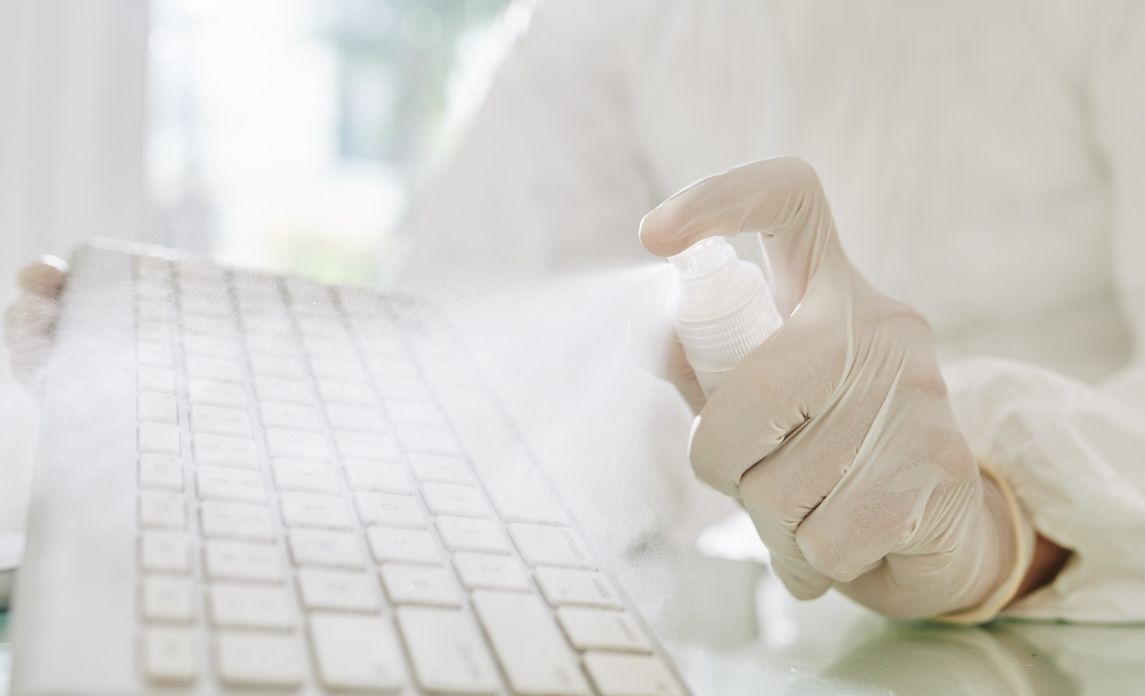It doesn’t matter if you have a small business or a national enterprise: a clean office from top to bottom and front to back is critically important if you want to make a positive statement.
This is even truer if you consider that most people won’t even make it beyond the front doors and reception area. If these spaces aren’t spick and span, potential customers will be turned away at first sight. A poorly maintained office also shows disrespect to both customers and visitors.
Most importantly, a clean office is essential for everyone’s health and safety. As a bonus, a healthy and safe work environment can help boost productivity and morale, which eventually results in business growth.
Office Cleaning Equipment Checklist
Thankfully, you can count on professional cleaning companies to keep your office in good condition. In fact, you can find cleaners who actually specialise in cleaning workplaces! It’s also possible to keep your workplace clean through your own efforts with the right tools and a few simple tips.
To get you started, you need to update your cleaning arsenal. Here are some essentials:
- Cleaning cloths, like microfibre towels, for all-purpose use
- High-power vacuum cleaner
- A long-handled duster for hard-to-reach areas
- A dust broom and dustpan
- A mop and a couple of buckets
- Rubber gloves
- Scrubbing pads
- Toilet brush
Aside from these supplies, you’ll also need the right cleaning solutions on hand. An all-purpose detergent is definitely a must-have, as well as some dish soap, degreaser, bleach, toilet cleaner, and window cleaner. What you need to buy depends on the facilities you have in your office.
Deep-Cleaning General Office Areas
With the equipment out of the way, it’s time to get started on clean-up. For general office areas like the reception or lobby including individual cubicles, the most important thing is to get rid of clutter first. Old items and files should be recycled, shredded, or thrown away as necessary before any proper cleaning can start.
Then, your first task is to dust. Remember to tackle less prominent or visible areas like the tops of light fixtures and cabinets, in between the slats of window blinds, as well as the grooves on furniture. Pay attention to the corners as well, where clumps of dust might build up. For high-touch objects and surfaces like doorknobs, light switches, fingerprint scanners, and shared telephones, don’t forget to disinfect after dusting.
Dust from the top down so you only have to sweep and mop the floor in one go. After dusting, take care of other cleaning tasks above the floor. Clean the windows and let them dry, dust or vacuum chairs and other furniture, and wipe off computer paraphernalia.
Then, vacuum the rugs and sweep the floor to remove the dust before mopping it. Two passes are ideal: one “wash” phase and one “rinse” phase. Don’t forget to dry the floor thoroughly to prevent any marks and smudges.
For more intensive cleaning, you should clean the air vents, polish any metal and chrome objects and surfaces, and clean the exterior windows.
Deep-Cleaning the Office Bathroom
The most important things to keep clean in the office bathroom are the sinks, toilet bowls, and urinals. Use the correct products and let them sit according to the product instructions, and then scrub them down before rinsing properly.
It’s also important to clean and disinfect the stall doors, particularly the handles. The mirrors, which often get splashed with water, should also be cleaned accordingly. Solid surfaces, including countertops, switches, paper towel holders, and the like should be cleaned and disinfected as well.
Then, sweep and mop the floors, remove the trash, and replace the bag in the bin. Once everything is sparkling, restock any items that need to be replenished, such as toilet paper, paper towels, hand soap, and hygiene products.
Deep-Cleaning the Office Kitchen and Lunchroom
Office kitchens and lunchrooms can be more difficult to clean than bathrooms, especially if you have multiple appliances in use. Some of the most crucial tasks include deep-cleaning the refrigerator and the microwave oven. Soak all the detachable parts in warm, soapy water to remove stubborn grime and food stains.
After scrubbing, wipe the insides of the refrigerator and oven. Use a soft cloth to prevent any scratches and make sure that everything is dry before placing the trays and shelves back in place. Then, wipe the door and handle clean before disinfecting them.
Next, wash any other appliances (the coffee maker pot, for example) before washing the sink. Use regular detergent and then follow it up with bleach. Rinse and dry it completely before wiping tables and chairs with disinfectant. If anything is greasy, lightly soap it first before rinsing and wiping it dry.
After that, deal with items on the counter like condiment bottles, tissue holders, and the like. If anything needs disinfecting, use a cloth dampened with an appropriate product.
Of course, don’t forget to clean the windows (when applicable), remove the trash, and sweep and mop the floors. Be aware that kitchen and lunchroom floors can be sticky or gritty, so take some extra effort to scrub off these spots.
Deep cleaning the office can be exhausting; even thinking about it can probably inspire feelings of tiredness already. Still, it’s a necessary chore that will benefit everyone. Hire professionals to do it for you for the best results, and just prepare a guide similar to this one so the entire place can be cleaned to your exact specifications.


